How to hold the plug correctly?
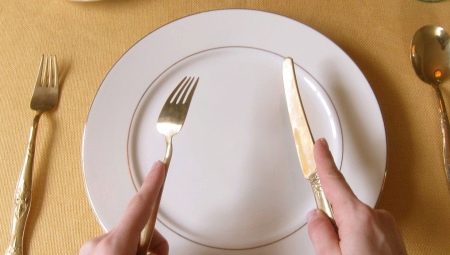
You need to hold the fork in your left hand, and the knife in your right. This rule is familiar to each of us from early childhood. Someone literally from the cradle absorbs all the rules of behavior at the table, while someone needs to re-learn all the intricacies of etiquette in adulthood.
In order not to get into an awkward situation during a dinner party, you should know the basic rules of etiquette and understand exactly which table item is intended for which dish.

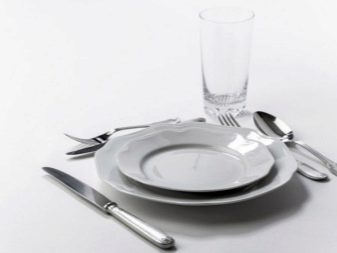
A little about the rules of etiquette
Using ordinary cutlery at home is one thing, but in a cafe or restaurant is quite another. At home, we relax and do not always remember how and what to do according to etiquette. But at a dinner at a party or a restaurant, no one wants to be in an awkward situation. Therefore, it is worth remembering the elementary rules of behavior at the table so as not to get into a mess.
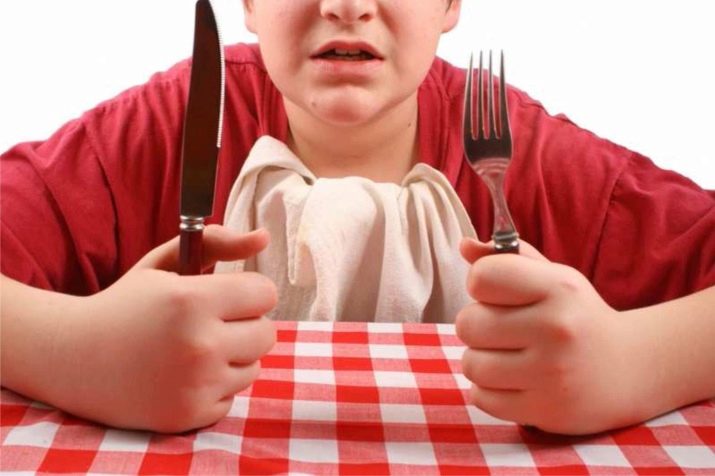
There are general rules that say which tableware should be held in the right hand and which in the left hand:
- If the knife is in the right hand, then the fork should be in the left. In this case, she is more of an assistant, since the main thing in this party is the knife.
- Hold the cutlery so that the teeth are always pointing downwards, with the end of the cutlery handle resting on your palm.
- As for the knife, then it should be held correctly. The index finger of your right hand should be positioned so that you can easily press on the blade of the cutlery itself. The end of the knife should also rest against the palm.
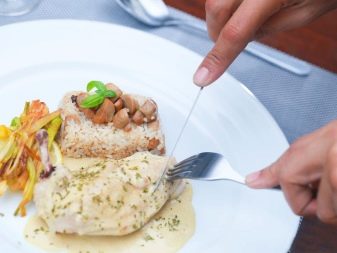

- You cannot hold cutlery in your hand as if you were holding a pencil. Also, don't grab them too close to the base.
- Usually meat dishes are eaten with these two utensils.Holding the cutlery properly in your hands will allow you to easily cut off small pieces of meat.
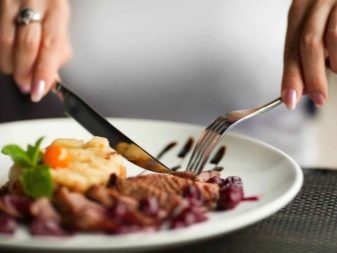
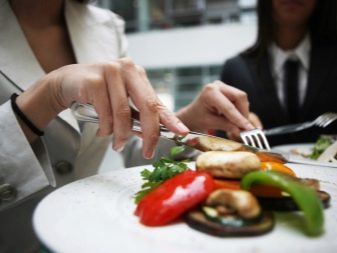
Sometimes, there is not enough knowledge about which hand and how the cutlery should be positioned.
You also need to know the basic rules on how to eat served dishes correctly:
- A small piece of, for example, meat must be properly chopped into the cloves. The index finger of your left hand should be firmly pressed against the handle of the cutlery, applying light pressure. Then, gently put food in your mouth.
- You cannot cut the whole steak into small pieces at once and continue eating with a fork in your right hand. Cut off a portion each time.
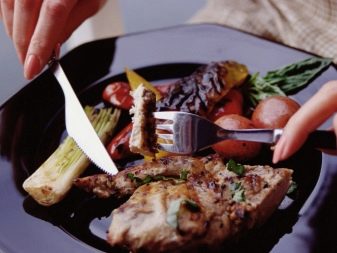
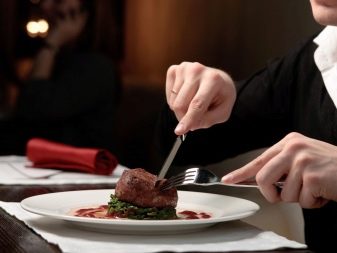
- After cutting off a small piece of meat, set the cutlery aside, placing the tips gently on the edge of the plate while you chew.
- If you were served meatballs, cabbage rolls, omelette or casserole, then in this case you can use one fork and hold it in your right hand. Tilt the fork so that the edge can break off a piece of the dish. Then prick it up and enjoy your meal.
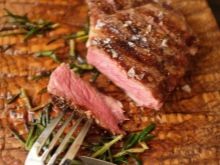
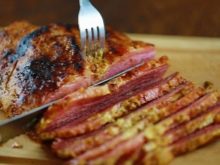
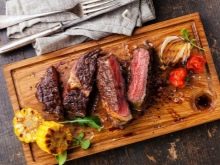
- Using a knife while serving dishes such as cabbage rolls is also allowed.
- When eating a meat dish with a side dish, it is quite possible that a fork can replace a tablespoon. For example, if mashed potatoes or rice were served as a side dish. It is worth remembering that in order to take the right side dish on the fork, its tines must point up. Small particles of dishes, mashed potatoes and other side dishes, various salads should be taken with scooping movements from yourself.
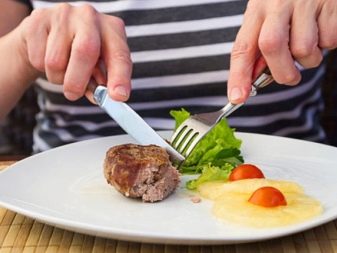
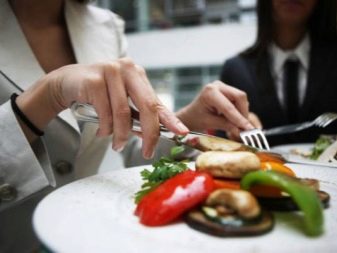
- Do not put a lot of side dish or salad on a fork, otherwise you can get into an unpleasant situation. Food may not catch on the teeth and fall into the plate. Or, in order to eat all this, you will have to open your mouth wide and indecent.
- Complex sandwiches should not be eaten with your hands, but with a knife and fork.
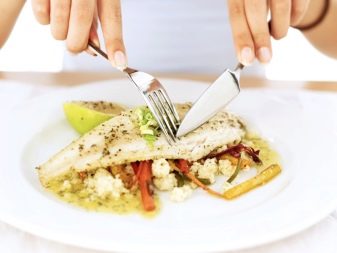
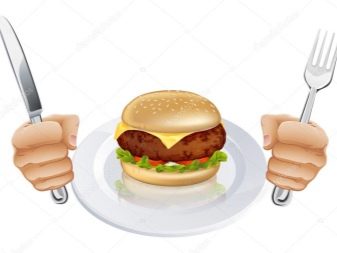
- The salad can be eaten without using a knife. Punching of large pieces is allowed.
- If during a meal you decide to pause and, for example, go to dance, then you should put the cutlery on a plate crosswise so that the waiter understands that you cannot take the dish yet.
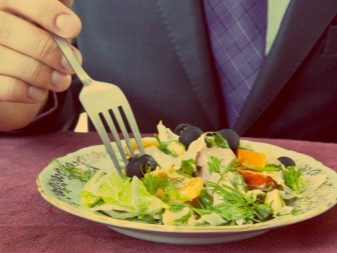
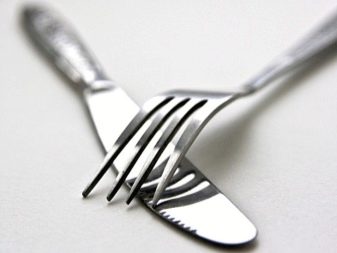
- Fruits such as an apple or a banana should be eaten with a knife and fork.
- Cold cuts, large cuts of meat, meat rolls and sausages should be eaten according to the same rules as the main meat course. Gently take a piece of meat and put it on your plate, and then, cutting off a small portion, you can safely taste it.
- After the end of the meal, the cutlery you used should be placed directly on the plate parallel to each other. It is strictly forbidden to put them directly on the table or napkin after use.
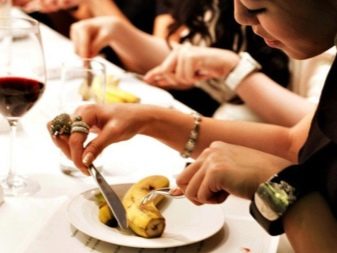
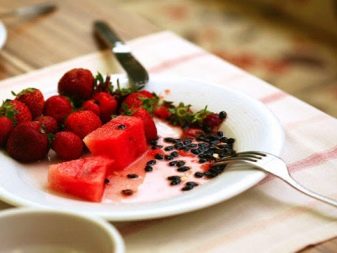
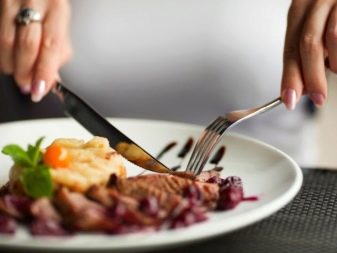

Features and varieties
To feel confident during a dinner party, you need to know not only how to hold a fork, knife or spoon correctly, but also know what exactly this or that cutlery is intended for.
Indeed, in addition to the usual plug, which we are used to using at home, there are many other varieties of it.
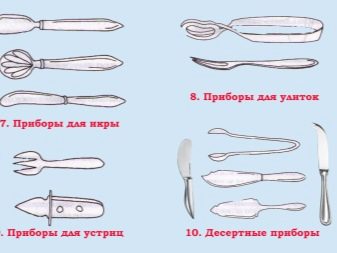
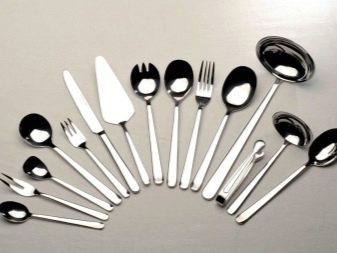
There are fish, meat, dessert forks, etc. Each of them differs from the other in the number of teeth, as well as in size:
- Cutlery with four prongs - this is a fork, which is called a dining room. It is widely used for the consumption of second courses. In particular, various kinds of cutlets, steaks, cabbage rolls, casseroles, omelets, etc. It is easy to recognize it, since it must always correspond to the diameter of the plate. This piece of cutlery should be placed with the prongs facing up next to the main plate when serving.
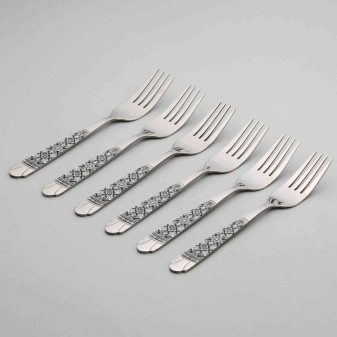

- Slightly smaller in size, but also with four prongs - this is diner... As a rule, it is used for cold and hot snacks. It should be located to the left of the fish.
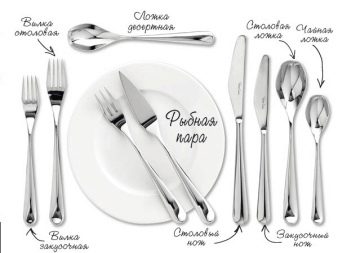
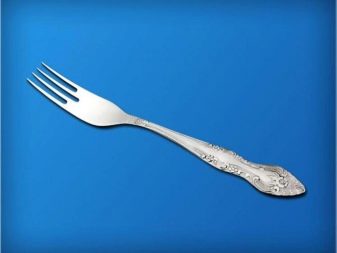
- Rybnaya - this fork has four prongs. But its shape can be very diverse: rounded edges, a depression between the teeth, etc. The shape of this cutlery directly depends on what kind of fish will be served on the table. This appliance should be located to the left of the table fork.
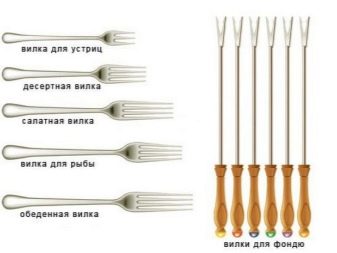

- By the way, the plug intended for herring, differs from the usual fish. Its difference is that it has only two teeth. A device for, for example, sprat has four, and sometimes five teeth, the ends of which are connected by a single jumper.
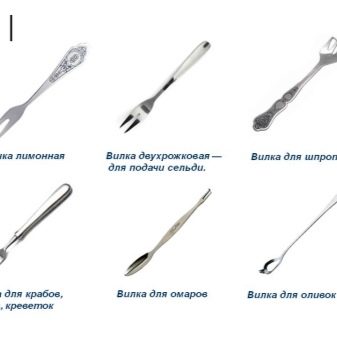
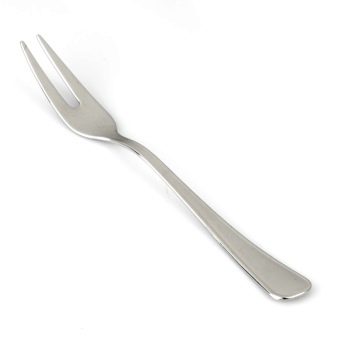
Seafood has its own tableware, which is easy to distinguish both in shape and in the number of teeth:
- For shrimp, there is a device with two prongs, which differs in its length.
- For cold cocktails and snacks from various kinds of seafood, there is a device with three prongs, one of which should be longer and sharper.
- For lobsters, use an appliance with small, curved prongs.
All cutlery for seafood is arranged in the order in which the dishes will be served.
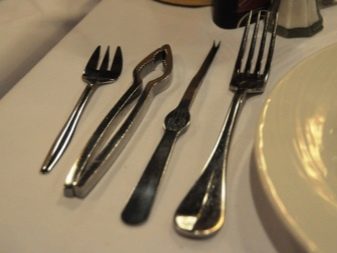

- Dessert - suitable for fruit pies, cakes and other delicious and sweet pastries. It has only three prongs. Place it directly over the plate with the prongs pointing to the right.
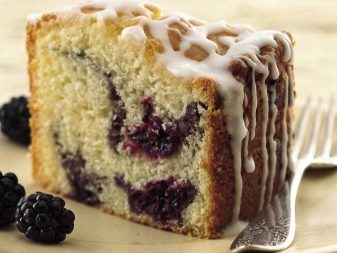
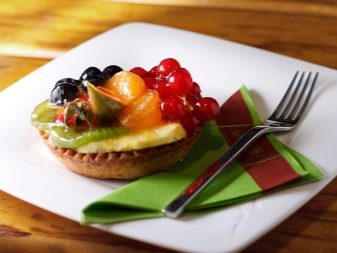
- Fruit or salad - This cutlery has only two prongs. As a rule, a fruit knife should be paired with such a fork.
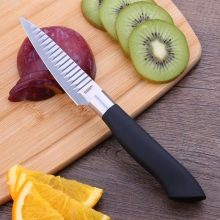
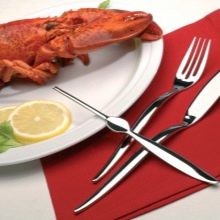
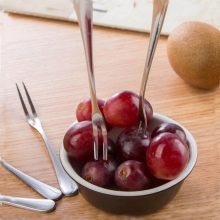
For information on how to properly hold a fork and use other cutlery, see the following video.




